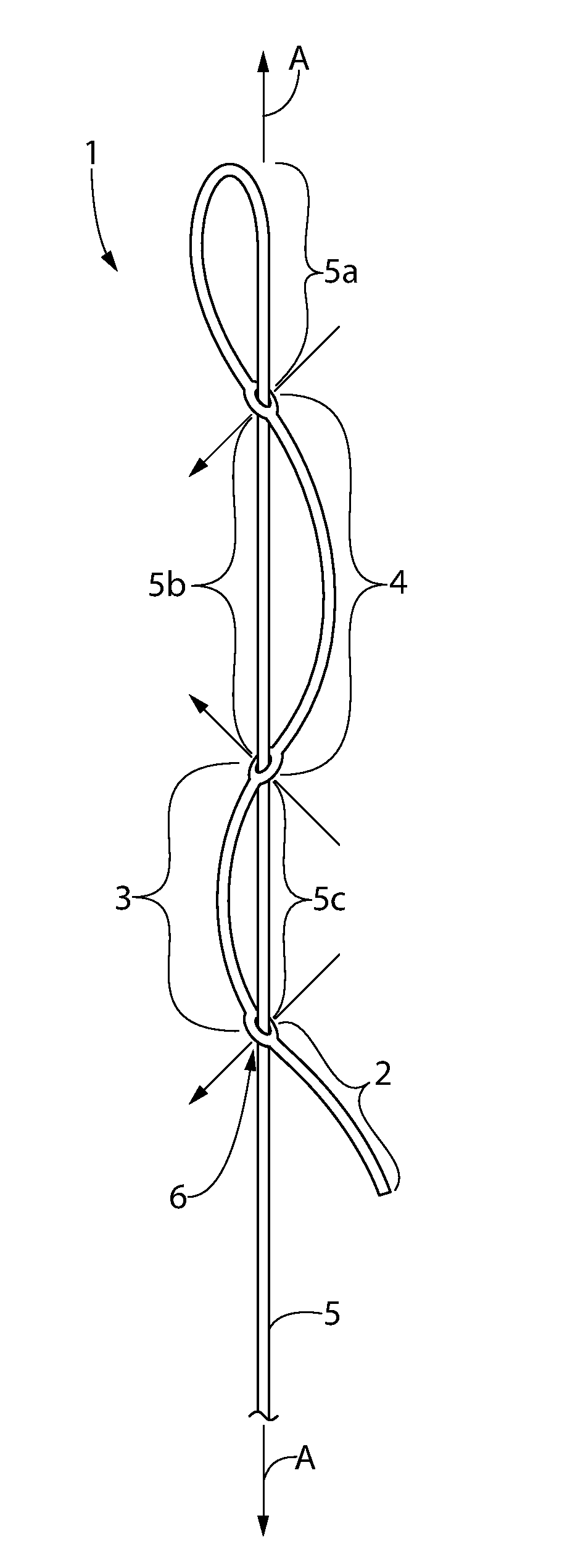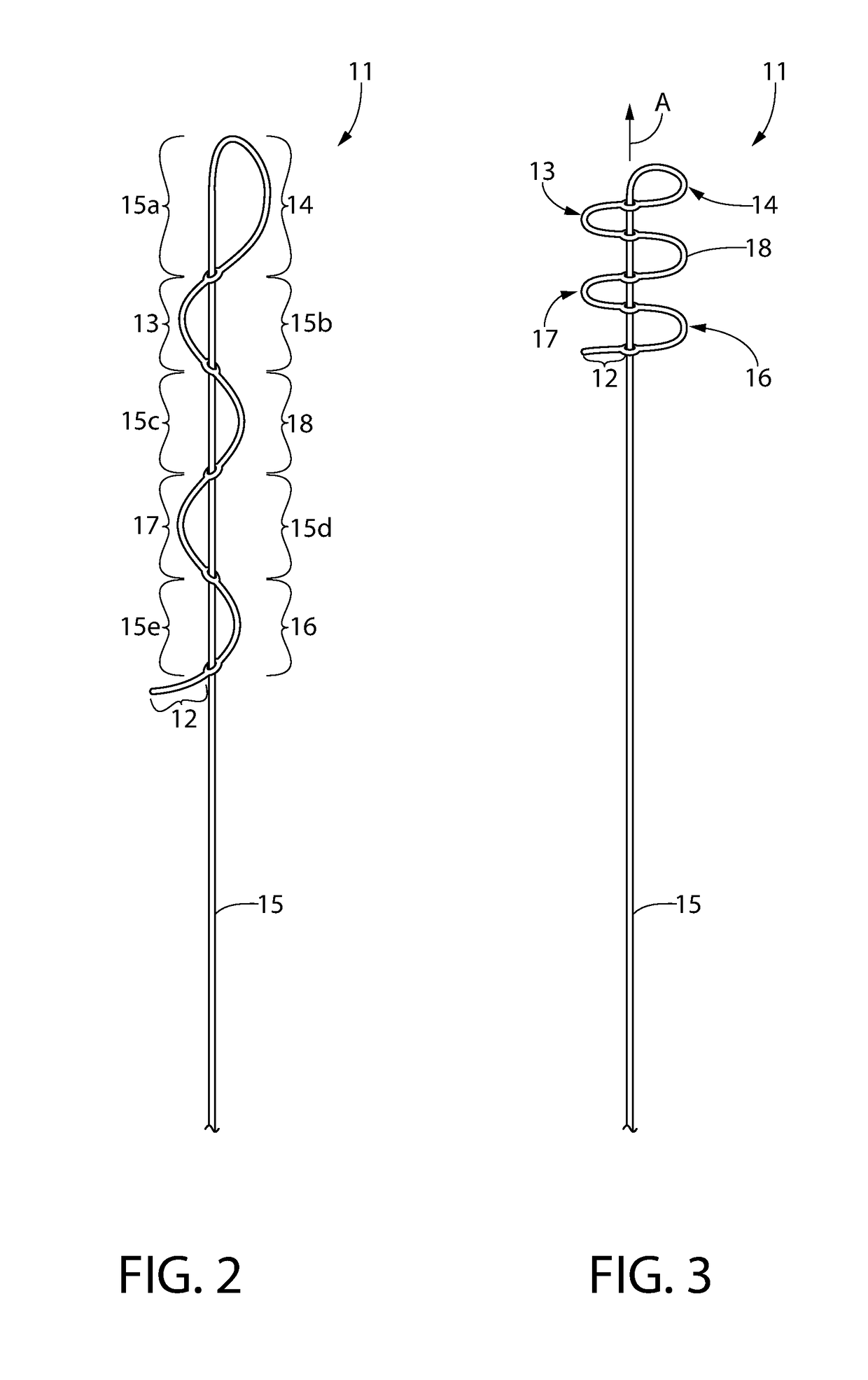Expanding suture knot anchor and device for placement of same
a suture anchor and knot technology, applied in the direction of suture equipment, application, etc., can solve the problems of causing tissue voids, destroying surrounding tissue, and further production of undesirable fluid, so as to prevent the dehiscence of surgical incisions, accelerate the application of skin and dermis, and close skin and dermis more superficially.
- Summary
- Abstract
- Description
- Claims
- Application Information
AI Technical Summary
Benefits of technology
Problems solved by technology
Method used
Image
Examples
Embodiment Construction
[0079]In the following detailed description of the preferred embodiment, reference is made to the accompanying drawings that form a part hereof, and in which is shown by way of illustration, and not by way of limitation, a specific preferred embodiment in which the invention may be practiced. It is to be understood that other embodiments may be utilized and that changes may be made without departing from the spirit and scope of the present invention.
[0080]FIG. 1a is a perspective view of a suture article strand 1 in an extended disposition in accordance with one embodiment of the present invention. FIG. 1a shows suture article strand 1 made in this embodiment of a braided suture material comprising the following portions: (i) a relatively rigid terminal end length 2; (ii) a relatively flexible loopable length adapted to form at least two loops, such as loops 3 and 4; and (iii) a threaded length 5 (i.e., comprising 5a, 5b and 5c) reverse-threaded through the braids of the relatively ...
PUM
 Login to View More
Login to View More Abstract
Description
Claims
Application Information
 Login to View More
Login to View More - R&D
- Intellectual Property
- Life Sciences
- Materials
- Tech Scout
- Unparalleled Data Quality
- Higher Quality Content
- 60% Fewer Hallucinations
Browse by: Latest US Patents, China's latest patents, Technical Efficacy Thesaurus, Application Domain, Technology Topic, Popular Technical Reports.
© 2025 PatSnap. All rights reserved.Legal|Privacy policy|Modern Slavery Act Transparency Statement|Sitemap|About US| Contact US: help@patsnap.com



